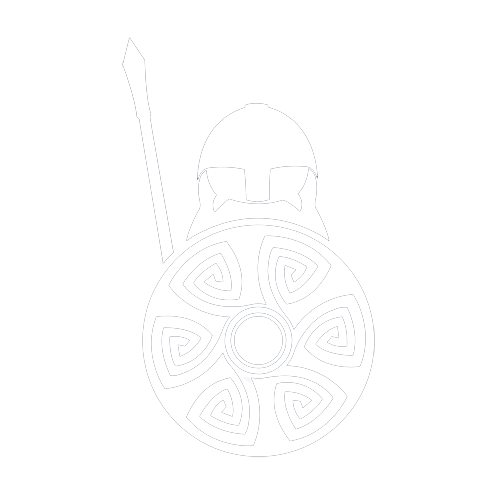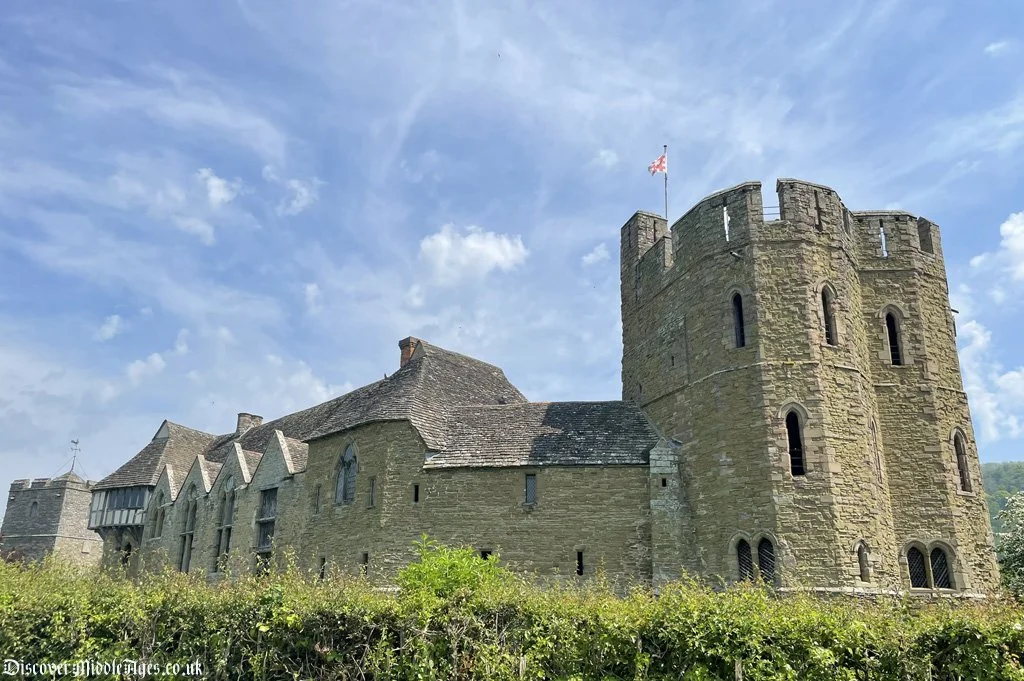Stokesay Castle the fortified Manor House
Stokesay Castle is nestled in the picturesque countryside near Craven Arms, Shropshire. The fortified manor house, built in the late 13th century by a local wool merchant, is a testament to medieval elegance and wealth. Despite its name, Stokesay is not actually a castle, but a grand manor house with small defensive features that kept thieves and brigands at bay.
A remarkable example of a fortified manor house, Stokesay Castle’s origins are attributed to Laurence of Ludlow, who made vast profits from the prosperous wool trade. Laurence had become one of the wealthiest men in England. His vision was to create a fortified residence that combined practicality with elegance, which sums up Stokesay perfectly.
The History of Stokesay Castle
Stokesay is first mentioned in the Domesday book of 1086, as a prosperous estate called “Stoches”, an Anglo-Saxon word suggesting a “cattle farm”. Stokesay was then divided into 2 manors, North and South Stoke. During the reign of King Henry I, South Stoke was handed to a Norman descendant called Theodoric de Say, which is where Stokesay got its name.
In 1281, the Stokesay estate was sold to Laurence of Ludlow for around £266. This was a large sum back then, but easily affordable for the incredibly wealthy wool merchant. In 1285, Laurence began the construction of Stokesay Castle, while he continued to live in Ludlow, 7-8 miles to the south east.
In 1291, Laurence received a license to crenellate (fortify) Stokesay, taking advantage of the newly established peace on the Welsh border after Edward I’s conquest of Wales in 1283. Laurence was keen to reassure the local Anglo-Welsh marcher lords, that his castle would pose no threat to them. This is reflected in the design, which peacefully demonstrates Laurence’s landowning class over anything more opposing. Landownership brought status in medieval England.
The Civil War and Restoration
In 1640-41, William Craven, first earl of Craven, who owned the Stokesay estate at that time, spent £468 and a further £65 building the wonderful gatehouse you see today, with its elaborately carved timbers. However, a couple of years later in 1642, the English Civil War broke out. Shropshire and Stokesay Castle were royalist and they soon faced the wrath of the Parliamentarians. Despite the castle being limited in its defensive construction, the Parliamentarians still captured Stokesay and destroyed the outer walls. Craven had his land confiscated.
In 1660, when the monarchy was restored, Craven received his land back. However, despite being landlords, Craven and his heirs leased Stokesay to the Baldwyn family. The Baldwyns helped to rebuild the parish church, and held onto the castle until the end of the 18th century. After a series of tenants, the castle drifted into decay.
A noted antiquarian and artist called Frances Stackhouse Acton, who adored Stokesay, appealed to the second earl of Craven to end the neglect of the castle. Her actions were successful, and £103 was spent “clearing out and securing Stokesay Castle”. In 1869, Stokesay was finally rescued by the highly successful glove maker, John Derby Allcroft, who bought the estate for £215,000. He oversaw its restoration, which started in 1875, and ultimately saved Stokesay Castle.
Laurence of Ludlow
As a wealthy wool merchant, Laurence of Ludlow played a pivotal role in the flourishing wool trade of the medieval period in England. Wool was a highly valuable commodity, and merchants like Laurence gained considerable wealth through its production, trade and export.
During his last voyage from London, he took 180 sacks of his own wool. These would have contained around 46,000 fleeces, with a value of about £1200. An enormous amount, given that an average ploughman of the day would have earned 35 shillings a year!
Laurence's affluence and social standing afforded him the opportunity to commission the construction of Stokesay Castle, which served both as a symbol of his prosperity and a fortified residence for protection and status. The castle's strategic location along trade routes between Shrewsbury and Ludlow, enhanced Laurence's influence and political connections.
Though historical records provide limited information about Laurence of Ludlow himself, his legacy endures through Stokesay Castle, a testament to his vision, wealth and influence. Today, Stokesay Castle stands as a tangible reminder of Laurence's legacy and the thriving wool trade that shaped the landscape and economy of medieval England.
Stokesay Castle Gatehouse
The gatehouse of Stokesay Castle is one of its most striking features, serving as the primary entrance to the castle grounds. Constructed with a combination of timber-framed and stone structures, the gatehouse is fortified with sturdy walls and defensive elements, showcasing the castle's defensive capabilities. It has elaborate carvings, depicting intricate patterns, heraldic symbols and ornate designs.
The Great Hall
The Great Hall stands as the centrepiece of Stokesay Castle. Characterized by its impressive timber roof, soaring ceilings and spacious interior, the Great Hall was the focal point of gatherings, feasts and celebrations. Decorative features such as carved screens, intricate woodwork and decorative motifs adorn the Great Hall, offering a glimpse into the medieval craftsmanship.
Living Quarters
The living quarters of Stokesay Castle encompass a series of chambers and rooms that provided accommodation and domestic comfort for the castle's residents. These quarters include private chambers, sleeping quarters, kitchens and other functional spaces, each tailored to meet the needs of medieval noble life. Despite their practical function, the living quarters feature architectural details and decorative elements that reflect the status and wealth of the owners.
The South Tower
As one of the castle's defensive structures, the South Tower provided a vantage point from which to monitor and protect the surrounding landscape, offering commanding views of potential threats or approaching visitors. It is constructed with stone masonry, characteristic of medieval fortifications, to ensure its strength and durability against attacks. Today, you can climb to the very top and enjoy the panoramic views of the Shropshire countryside.
In addition to its defensive function, the South Tower likely provided accommodation for residents or guests of Stokesay Castle. The tower may have housed private chambers, living quarters, or other domestic spaces, offering a comfortable and secure retreat within the castle complex.
The Moat
Surrounding Stokesay Castle is the moat, which measured between 15 feet (4.6 m) and 25 feet (7.6 m) across. It is uncertain whether the moat was originally filled with water or if it was a dry moat, as there is little evidence of clay lining to hold the water in. An engraving from 1731, shows the moat filled with water. Today, however, it is a dry moat with trees and plants, that offers an enjoyable walk all the way round the castle.
Stokesay Castle Legend
According to local folklore, Stokesay Castle is the hiding place of a treasure chest filled with gold. But this isn’t just any treasure, it was supposedly hidden by two giants! The legend tells us that the treasure chest is guarded by a raven, perched atop it, ever watchful. The key to this mysterious chest was lost when one of the giants accidentally dropped it into the castle’s moat. Imagine the raven’s beady eyes, the ancient stones and the secrets waiting to be uncovered…
The North Tower and the Church of St John the Baptist
The North Tower of Stokesay Castle is part of the living quarters, and is accessed by the great stairs from the hall. The large room with huge timber beams was extended to include a closet. This closet over hangs the lower stone walls, along with 3 sides of the room, supported by wooden brackets resting on stone corbels. The window in the North Tower overlooks the church of St John the Baptist.
The church predates the castle, but was largely rebuilt after the English Civil War by the Bladwyns. The interior is a rare example of an Anglican church that retains mid-17th century fittings.
Visiting Stokesay Castle
Stokesay Castle is run and managed by English Heritage. For details on opening times, facilities and refreshments please visit:
https://www.english-heritage.org.uk/visit/places/stokesay-castle/
Address: Stokesay, Craven Arms, Shropshire, SY7 9AH






















